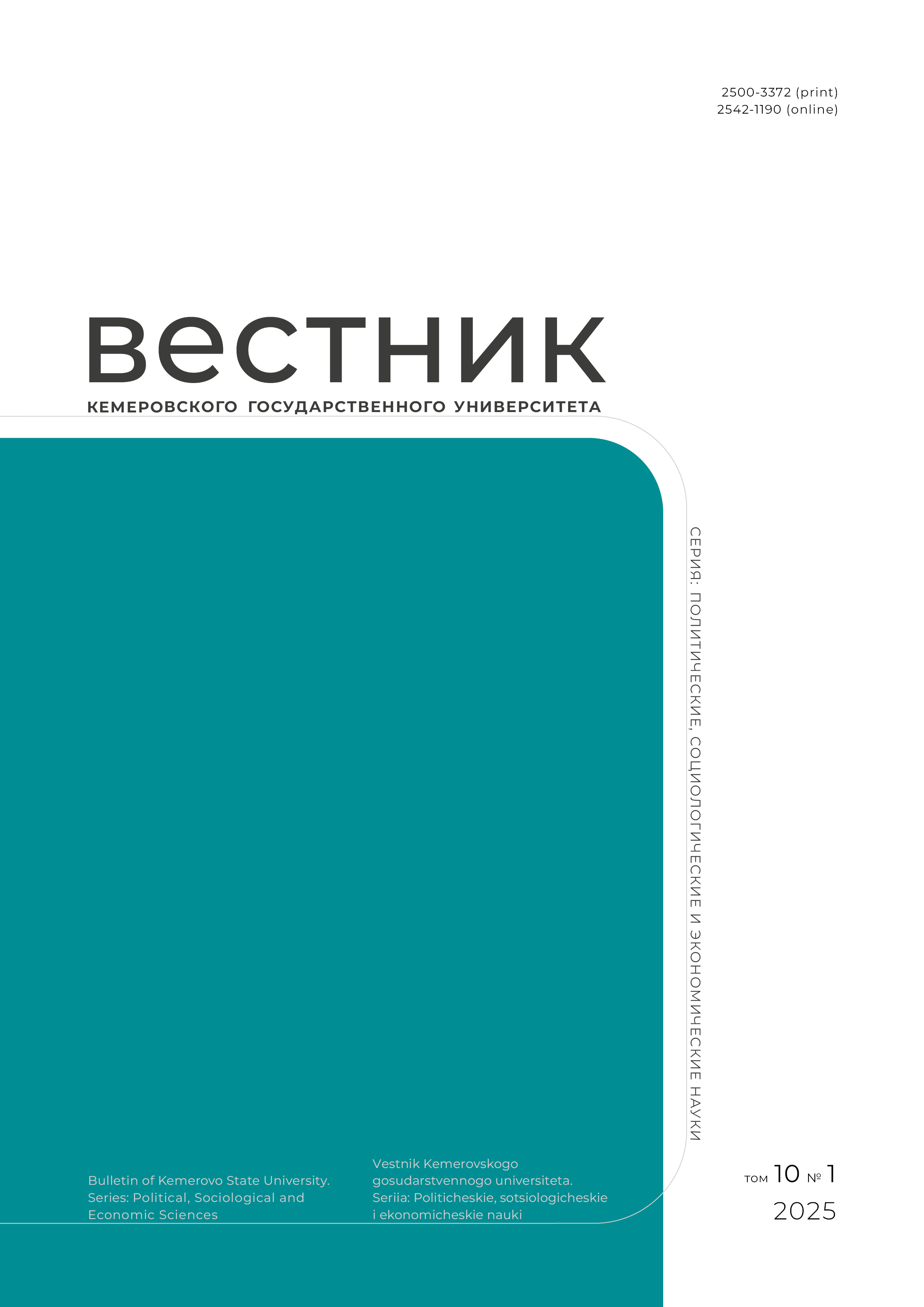Moscow, Moscow, Russian Federation
Novosibirsk, Russian Federation
Omsk, Russian Federation
UDC 33
The research featured the decline of legitimate birth rate in the context of the transformation that family institution is currently undergoing. According to the Demography National project of the Russian Federation, the key objective of the national demographic policy is to increase the number of children up to 1.7 per woman. The authors believe that it is impossible to achieve the target indicator without revealing the institutional capacity of the so-called traditional family, which has a lower the level of birth control by abortion and contraception. In order to determine the institutional capacity of the national project, the authors estimated the legitimate birth rate and the level of birth control by the population. The methods involved the Coale-Trussell’s model, which is based on the assumption that controlled birth rate deviates from natural birth rate. The study was based on the data about the number of births in 2017. The data were obtained from twelve Siberian regions and included such information as maternal age and legitimacy. The Coale-Trussell’s model revealed a good institutional capacity that can enhance the demographic function of the family and increase the birth rate.
institutional regulation, marriage, family relations, demography, birth rate standards, the level of birth control by the population
1. Hodgson G. M. From pleasure machines to moral communities: an evolutionary economics without homo economicus. Chicago; London: The Chicago University Press, 2013, 323.
2. Gavrov S. N. The historical change in the institutions of family and marriage. Moscow: NITs MGUDT, 2009, 133. (In Russ.)
3. Becker G. S. A treatise on the family. Cambridge: Harvard University Press, 1981, 304.
4. Zherebin V. M., Romanov A. N. Household economics. Moscow: Finansy-IuNITI, 1998, 231. (In Russ.)
5. Hajnal J. Age at marriage and proportions marrying. Population studies, 1953, 7(2): 111-136.
6. Lesthaeghe R. On theory development: applications to the study of family formation. Population and development review, 1998, 24(1): 1-14.
7. Coontz S. The family revolution. 01.09.2007. Available at: https://greatergood.berkeley.edu/article/item/the_family_revolution (accessed 15.08.2019).
8. VanOrman A. G., Scommegna P. Understanding the dynamics of family change in the United States. Population Bulletin, 2016, 71(1). Available at: https://www.prb.org/wp-content/uploads/2016/08/prb-population-bulletin-71.1-complex-families-2016.pdf (accessed 15.08.2019).
9. Mikheeva A. R. A person in the field of private life: vectors of transformation of family relationships. Novosibirsk: IEOPP SO RAN, 2012, 156. (In Russ.)
10. Preston S., Heuveline P., Guillot M. Demography: measuring and modeling population processes. Malden, MA: Blackwell Publishers, 2000, 308.
11. Situating fertility: Anthropology and demographic inquiry, ed. Greenhalgh S. Cambridge University Press, 1995, 324.
12. Coale A. J., Tye C. Y. The significance of age-patterns of fertility in high fertility populations. The Milbank Memorial Fund Quarterly, 1961, 39(4): 631-646.
13. Henry L. Some data on natural fertility. Eugenics quarterly, 1961, 8(2): 81-91. DOI: https://doi.org/10.1080/19485565.1961.9987465
14. Wilson C., Oeppen J., Pardoe M. What is natural fertility? The modelling of a concept. Population Index, 1988, 54(1): 4-20.
15. Kuzmin A. I. The main approaches to assessing the demographic potential of the territory. Problems of modeling social processes: Russia and Asia-Pacific countries: Proc. II All-Russian Sci.-Prac. Conf. from the Intern. participation, Vladivostok, December 7-8, 2016. Vladivostok: DVFU, 2016, 183-187. (In Russ.)
16. Mineau G. P., Bean L. L., Skolnick M. Mormon demographic history II: the family life cycle and natural fertility. Population Studies, 1979, 33 (3): 429-446.
17. Coale A. J., Trussell T. J. Model fertility schedules variations in the age structure of childbearing in human populations. Population Studies, 1974, 40(2): 185-258.
18. Coale A. J., Trussell T. J. Technical note: finding the two parameters that specify a model schedule of marital fertility. Population Index, 1978, 44(2): 203-213.
19. Okun B. S. Evaluating methods for detecting fertility control: Coale and Trussell's model and cohort parity analysis. Population Studies, 1994, 48(2): 193-222. DOI: https://doi.org/10.1080/0032472031000147766
20. Lundberg S., Pollak R. A. The American family and family economics. Journal of Economic Perspectives, 2007, 21(2): 3-26. DOI:https://doi.org/10.1257/jep.21.2.3
21. Ginther D. K., Pollak R. A. Family structure and children’s educational outcomes: Blended families, stylized facts, and descriptive regressions. Demography, 2004, 41(4): 671-696.
22. Greif A. Cultural beliefs and the organization of society: historical and theoretical reflection on collectivist and individualist societies. Journal of Political Economy, 1994, 102(5): 912-950





















